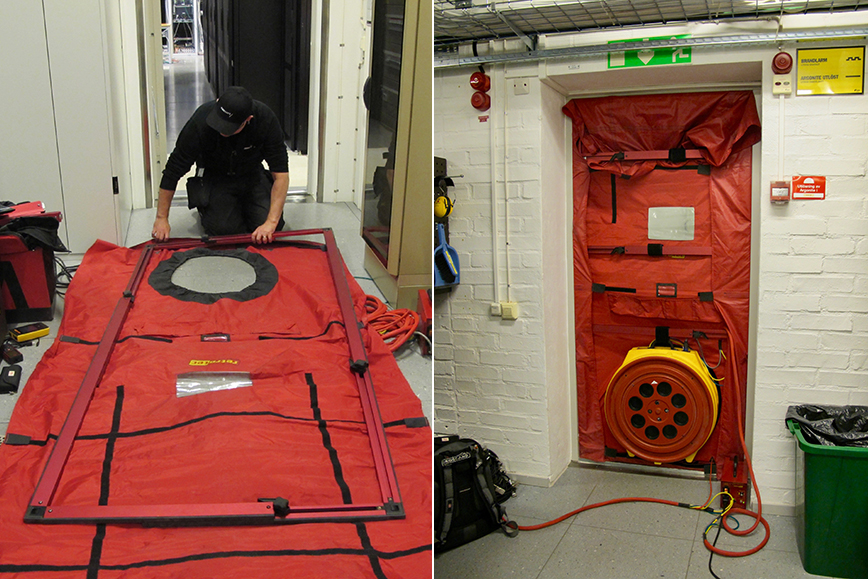Testing Our Gas-Based Fire Suppression System
Gert Svensson, PDC
In October 2019 we performed a test of the air-tightness of PDC’s three computer halls (the main hall, the tape-robot room and the small computer hall). The background to these tests is that we use a gas-based fire suppression system in these rooms. If a fire is detected in one of our computer halls, a mixture of the inert gases argon and nitrogen (sometimes referred to as Argonite) is released into the room from a bank of high-pressure gas bottles (shown below). The idea is to reduce the oxygen level in the room from the normal 18% to around 11%. This is enough to extinguish the fire, but humans can still breathe, at least for a short time. (The sensation would be comparable to breathing when very high up on a mountain.) Of course, a warning is sounded before the gas is released so people can exit the room. When the gas comes into the room at a high pressure, the pressure in the room would rise enough to destroy doors, windows and even walls if special measures were not taken. In our case, special pressure equalization dampers are opened automatically. Before the gas is released, fire dampers shut off the normal ventilation to the room. After the gas has entered the room, the pressure equalization dampers are closed again to keep the gas in the room for as long as possible. It is this step where the air-tightness of the room is highly important. If the gas is diluted too much, the fire could re-ignite. The fire code states that the gas should be kept at an effective level for at least ten minutes.

In the test, the normal door to the room is replaced by a frame with air-tight plastic and with a big fan that can increase the pressure in the room (see images above) and sensors that can measure how fast the pressure drops. In our case, we found that the rooms were more air-tight than required. However, we also found that, for the small computer hall, too much gas was released for the size of the room. This must have been caused by a human error in the design of the system in 2003. Whether this is within the safety limits is not yet known at the time of writing.
